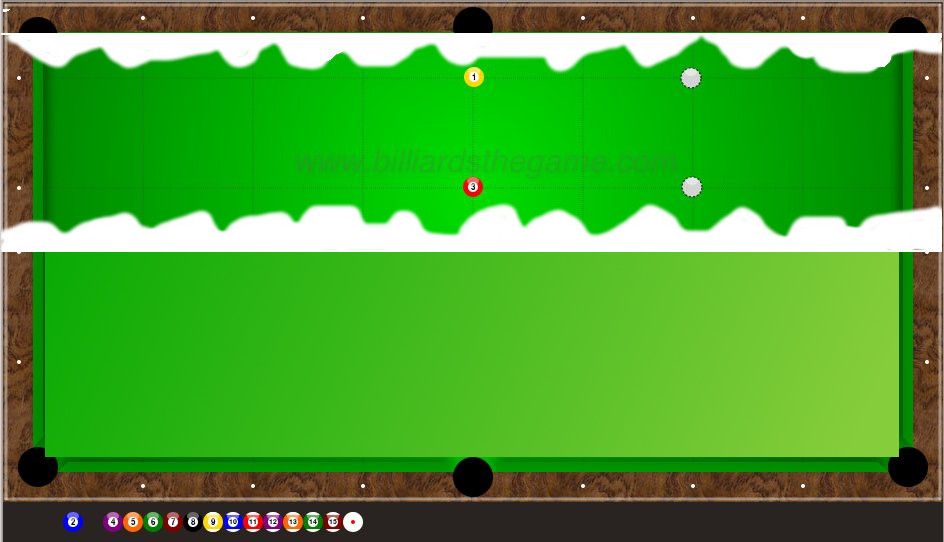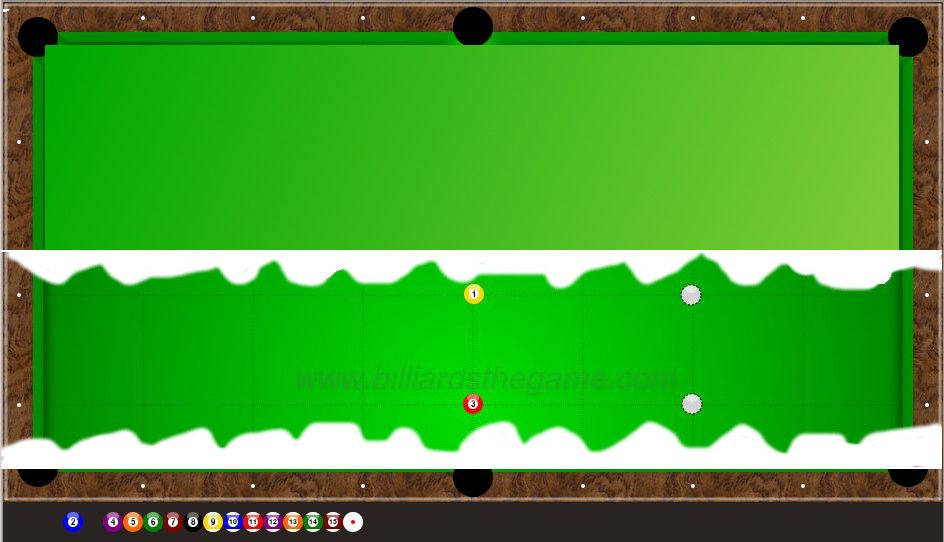I hesitate to do this. I don't want to poison the well even before I get Stan's DVD... but, what the hell? (please see my question below your post).
You say that, "each shot will have a slightly different orientation". I would like to pose a little thought experiment using curtains. Say we have the following setup (the shooter can't see beyond the curtains, but the Great Observer - that's us - can see the reality).
I will stipulate that the 1-ball is makeable in the top left corner pocket by a shooter standing at the right of the table between the curtains. Further, based on that knowledge, he then moves to the 3-ball shot, his 'orientation' changes in whatever way you believe that it would change, and he then pockets the 3-ball in the same pocket.
(It is a separate question as to whether, with the curtains in place, he actually has enough information to pocket the 1-ball... but for now, we will assume he can.)
Now we move the curtains, and set up the shots again:
I will stipulate that the shooter again makes the 1-ball in the upper left corner pocket, and then moves to the 3-ball and proceeds to pocket it. Now here is my question:
Is there any difference between
the change in his perception that takes place between 1-ball and 3-ball in the first setup, and
the change in his perception that takes place between the 1-ball and 3-ball in the second setup?
Please read that carefully. I'm wondering about differences here.
Thanks.
- s.west

